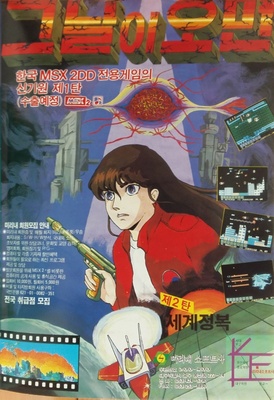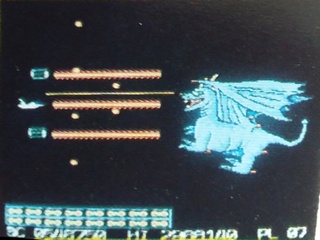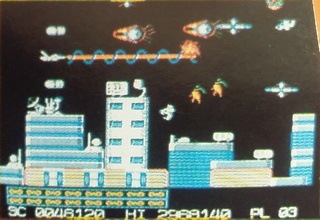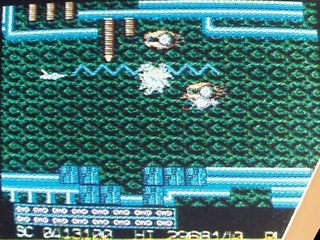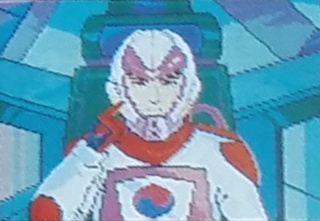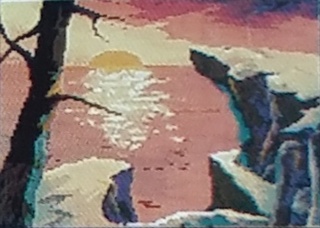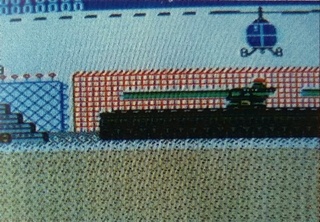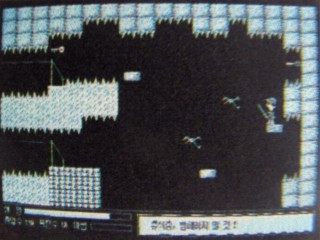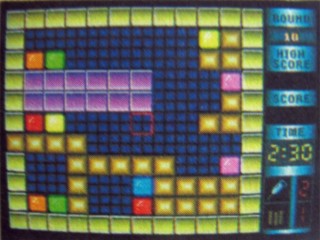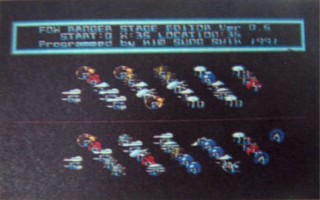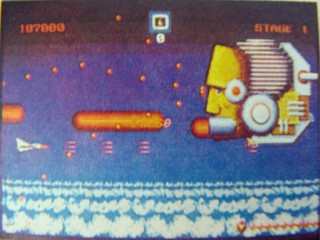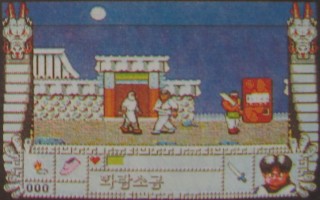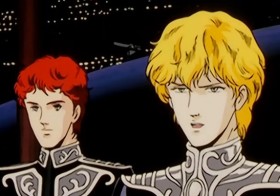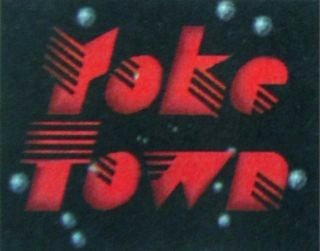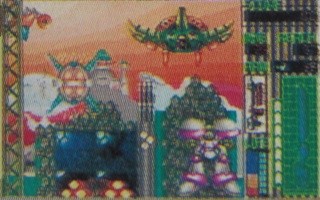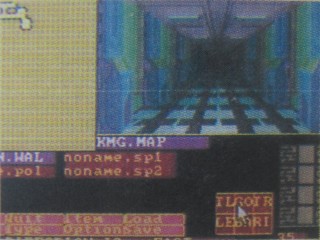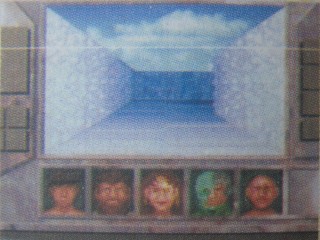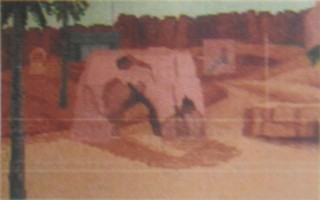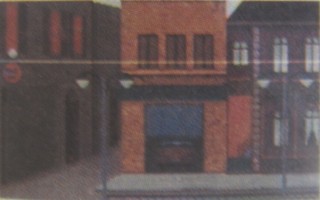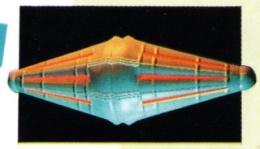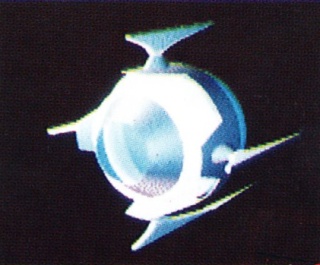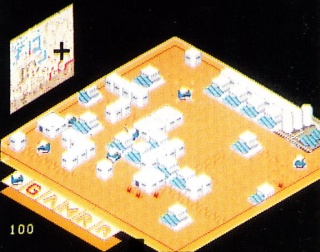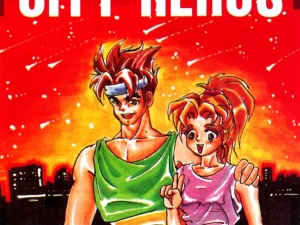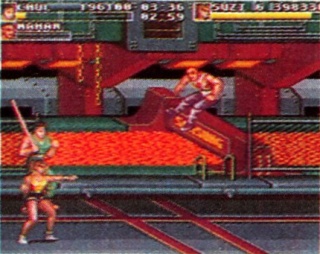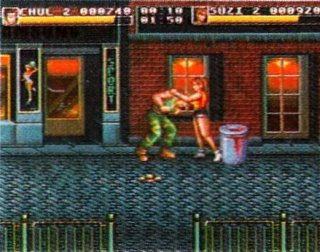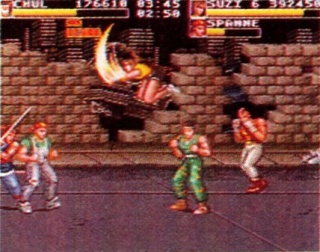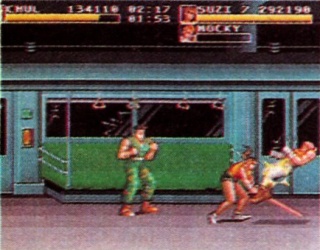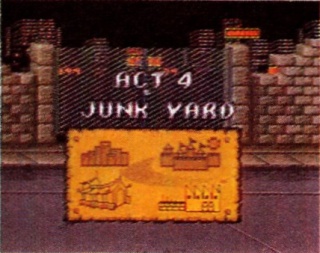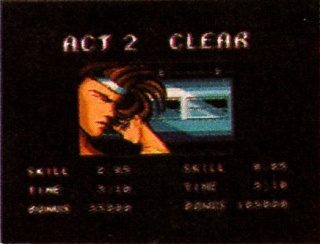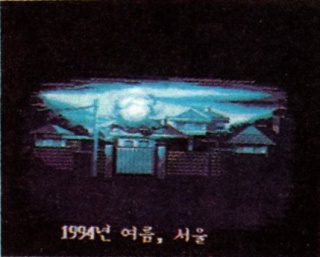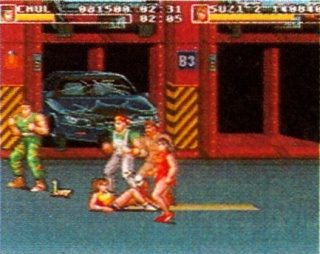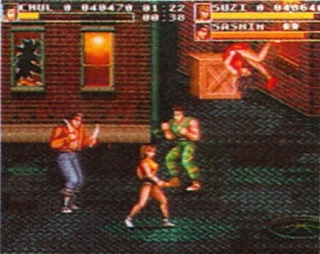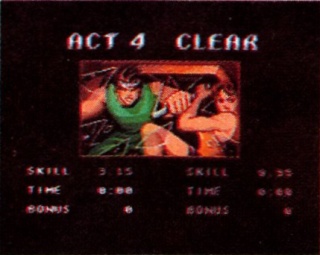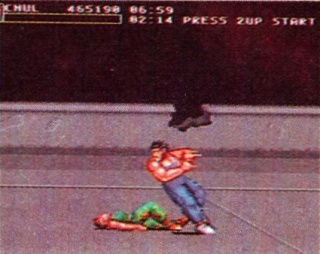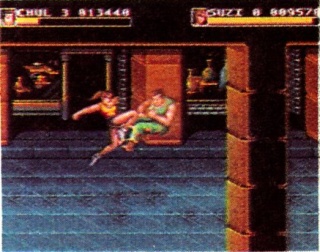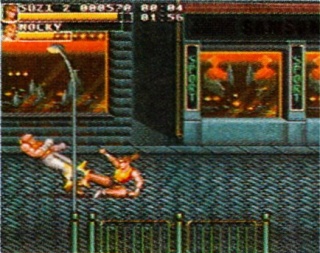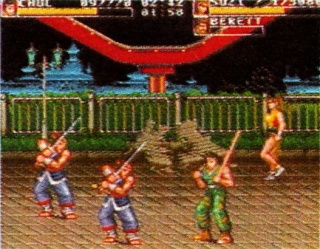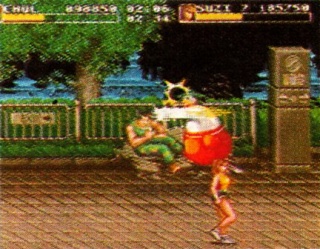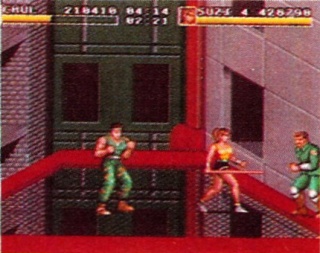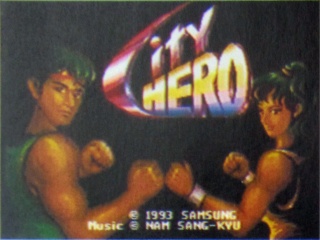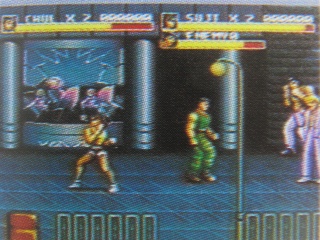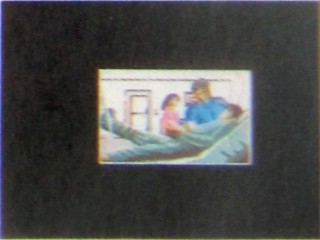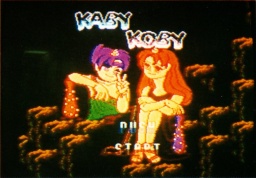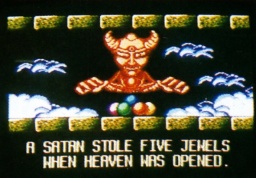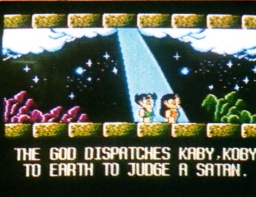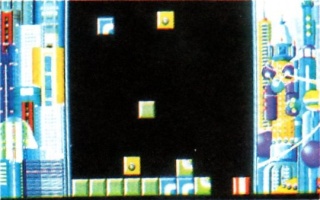A History of Korean Gaming
|
<<< Prior Page |
|
Lost Games: |
||||
|
|
|
|
|
Lost Games Page 1 (1987-1993)
Early Mirinae Games - MSX, PCB (1987-1991)
Mirinae's old homepage listed a whole bunch of early games that have actually only existed as concepts, which designer Kim Kyongsoo created in his school days, as he revealed in our interview. Amongst them are the planned MSX titles Smorpy (April 1987) and Star Tale (July 1989), as well as the supposedly PCB based games The Temple of Heavenly Sphere, Assault Gear (both November 1989), Venturaiders (May 1990), Landst (September 1990) and Rune Blade (June 1991).
그날이 오면 (Geu Nal-i Omyeon) / The Day - MSX2 (1989)
The much hyped first episode of Mirinae's famous The Day series causes much confusion among retro gamers until today, although Mirinae's Cho Daeho clearly stated in an interview that it was never released, because they wanted to make a game that "falls nothing short of the Japanese games". The main reason for the cancellation was stated as too choppy scrolling (whether or not it ever occured to them to just correct that certain issue rather than trashing the whole game remains unknown)1. Amongst other things the screenshots show that it featured "option" upgrades, which are missing in the sequel, and a bunch of other weapons reintroduced by later games in the series.
According to Mirinae's now defunct website, a version of the game has actually been released - it lists a board game by that title (though it is unclear whether that means an actual board game, or board as in PCB), which supposedly has been exported to Japan,2 but it might be just another exaggerated claim from the early days of the industry (see Softmen and Jelda).
Unreleased Zemina Games - (1990-1992)
Only appearing in some Zemina advertisements were an MSX version of OutRun, and a screenshot of a game only referred to as "Sagyeok Game" ("shooting game"). Later, Zemina announced two more exclusive games for Nintendo and Sega/Samsung's 8-bit consoles besides Super Boy 4 and Magic Kid Googoo. It seems the company folded before Wonsiin II for Master System or the Famicom game Teungmyeong X-35 (Mission X-35) could be completed7. Wonsiin II of course was the sequel to their Dino Riki-inspired MSX game and might have been finished by Open as Wonder Kid, but nothing is known about the other game.
앙마의 동굴 (Angma-ui Donggul) - IBM PC (1991)
Angma-ui Donggul was a interestingly-looking platformer stated to be inspired by Aztec on the Apple II. The article introducing the game in MyCom claims the programmer Park Jeonggeun was also responsible for the PC-version to King's Valley, together with two friends, Kim Sungsik and Yeom Jeongcheol4, which was confirmed by Kim Sungsik on Danbi System's official homepage. Well, none of them is listed on the credits screen in that game. Did they release the game under aliases? Were they impostors? Are the credits faked? We might never know...
Fox Ranger prototype versions - IBM PC (1991-1992)
Version 0.5 of Fox Ranger was first shown in mid-1991. The graphics were in a very early stage, but it seemed playable at that point. The preview also showed Soft Action's stage editor, and described it in a way that led to assume it would be included with the final product, which in the end it wasn't but that might have been a mistake on the part of the magazine5.
A more advanced version was presented in early 1992. This one was already very similar to the final game, but a few boss sprites were completely redrawn and others slightly edited until the release6.
Quick Info:
|
Developer: |
Soft Action |
|
Genre: |
Shoot-'em-up: Horizontal |
|
Theme: |
Space Combat |
화랑소공 (Hwarang Sogong) - IBM PC (1992)
Hwarang Sogong (IBM PC)
After the success of his Korean Dungeon Boy, Choe Wanseop started to create a more ambitious game, together with two other designers, Yi Myeonggyu and Choe Deokhyeon. The development was funded by Hyundai this time8. A preview appeared in January 1992, which claimed the game was 90% finished and expected for a release in March or April of that same year9. After that, however, the game just quietly disappeared.
The game was conceived as a sidescrolling Action-RPG and would have been set in an ancient time when the Korean peninsula was divided into three kingdoms (57BC - 668). The player would have taken control over Sogong, a member of some kind of "knight order" called Hwarang, who embarks on a quest to resque a princess.
더파이터 (The Fighter) - IBM PC (1992)
A fighting game inspired by Street Fighter II. It was programmed by Kim Seongjin together with two others, and displayed in Hercules graphics10. A screenshot from a cutscene for the game rips off the popular (also in Korea) novel/manga/anime Ginga Eiyuu Densetsu (Legend of Galactic Heroes), more specificly the two characters Reinhard and Yang. That's everything known about the game. "The Fighter" is not the easiest title to research, after all.
요크타운 (Yoke Town) - IBM PC (1993)
Yoke Town (IBM PC)
Another homebrew game, said to consist of vertical and horizontal shmup stages11. It is not known whether development has been completed. As the Korean writing for the title is identical to "Yorktown", this one is a bitch to research as well.
Quick Info:
|
Genre: |
Shoot-'em-up |
대격 (Daegyeok) - IBM PC (1993)
Daegyeok was in development at a team called Animus, which consisted of 7 university students led by one Yi Seungho12. Daegyeok was announced as a fighting game featuring story cutscenes, but only the title screen was ever shown. SKC intended to publish it. Animus was never heard of anymore, afterwards.
Daegyeok (IBM PC)
Quick Info:
|
Developer: |
Animus |
|
Genre: |
Fighting |
Games by 나무 Namu - IBM PC (1993)
Namu was the company of former MBitM team lead Jeong Chanyong (New Boggle Boggle, The Micro Xevious). It first appeared on the scene in mid-1992, as the developer for the official game to the EXPO 93. In this adventure Kumdori, the exposition's mascot, had to search for the world's disappeared cultural treasures on Jeju Island. It was supposed to be handed out for free at the exposition, but no record as to whether that actually happened could be found, yet. One year later, Namu announced three new games at once: Fire Force was described as an arcade style shooter similar to Operation Wolf, Sweet Collection quite obviously a puzzle game. I'm finally would have been an adventure (or more likely interactive fiction) game about an amnesiac plane crash survivor13.
In October 1993, Namu was integrated into Open, who announced to publish Fire Force and Sweet Collection in one bundled package14, but in the end that wasn't released, either.
Only in late 1995, the game resurfaced as Block Fantasy, now stated as developed by Bogo World and published by YoungCom15. It is not known whether some former Namu members left to work at Bogo World or if the game was still really developed by Open.
카르마 Karma - IBM PC (1993)
An early cancelled game by Family Production, who became one of the most famous Korean development houses during the course of the nineties, Karma (not to be confused with the 1996 3D RPG by Dragonfly) was obviously in love with Might and Magic. The planned release date was given as October 1993, only one month after the magazine it was featured in was sold, so it was likely fairly advanced in development. The article boasted with 10 dungeons, 30 different monster sprites, various attack animations and a party of up to six heroes, recruitable from 30 NPCs16.
Quick Info:
|
Developer: |
Family Production |
|
Genre: |
RPG |
|
Theme: |
Fantasy |
Hack: Format - IBM PC (1993)
Hack Format would have told the story of an atomic conflict in the far future of 1999, giving the player the task to find and disarm the threatening atomic bomb. Developer Marixon promised an adventure game with shooting elements, and an ingame computer interface for the hacking that uses 60% as much commands as DOS. The game was shown in the same issue as Karma, and even scheduled a month earlier thant the other game, so according to the plan it would have been available almost at the same time the article was printed. Maybe the fact that Marixon advertised it as "the first Korean adult game" caused problems with the then newly established game censorship (although the magazine claimed that there was no actual "adult" content)17.
The project was faced with nothing but trouble, though. As this was the first game in development at Marixon, all developers were very inexperienced. Furthermore, most of the team dissolved and was replaced with new staff during the development cycle, which the publisher also shortened from a planned two years to two months18.
Quick Info:
|
Developer: |
Marixon |
|
Publisher: |
Marixon |
|
Genre: |
Adventure |
이니언 (Inieon) - IBM PC (1993)
A sidescrolling action-RPG that was in development by the "National Association of Computer Studies Departments". Nothing else is known about this game19.
키드캅 (Kid Cop) - IBM PC (1993)
Kid Cop was a 1993 movie about a group of kids having to fight off burglars. Soft Action was supposed to create an action game tie-in, but the game was canceled due to a disagreement with the production company of the film. Soft Action claimed the game was as good as finished at the time of its cancellation, but as there are no screenshots available, it is impossible to tell how much truth lies in that statement20.
인사이더 (Insider) - IBM PC (1993)
A vertical scrolling shooter by Makkoya, which was compared to Xevious for its structure of fluent area transitions instead of separate stages. A few abstract renders for enemies were all that was shown.
Insider target render
Quick Info:
|
Developer: |
Makkoya |
|
Genre: |
Shoot-'em-Up: Vertical |
Unnamed Makkoya strategy simulation - IBM PC (1993)
A strategy game, supposed to run in real time and to be slightly inspired by Dune II, although the screen composition more closely resembles Populous. Nothing else is known, and the game didn't even have a title at the time of its coverage21.
Quick Info:
|
Developer: |
Makkoya |
|
Genre: |
Strategy |
씨티 히어로즈 City Heroes - Mega Drive (1993-1994)
City Heroes (Mega Drive)
Of all the unreleased games on this page, City Heroes is the most tragic case. The same team that had brought Uju Geobukseon (with some reinforcements) began working on it in September 1992, and by spring 1994, the game was completely finished and bugfixed, with the master rom just waiting for mass production22, multiple magazines had printed in-depth coverage, and Samsung even claimed ambitions to bring the game to overseas markets23, but then it seems the confusion around the still new censorship system ultimately prevented its release.
The belt scrolling brawler was first ridiculed for being almost a carbon copy of Streets of Rage 2, but when the development reached its final stages, every journalist who had played the game reported about its astonishing quality. The game would have featured 5 stages and a 2-player co-op mode24.
Originally, Samsung had at least one more Mega Drive game in the planning stages, a one-on-one fighting game called Princess Fighter, to be developed in cooperation with an unnamed Japanese developer. That title got cancelled even earlier due to complications with the partner, but after the big fiasco with City Heroes, Samsung immediately disbanded all its in-house console development, anyway25.
Artwork
City Heroes (Mega Drive)
City Heroes (Mega Drive, older version)
깨비 꼬비 (Kaby Koby) - Famicom (1993-1994)
Kaby Koby (Famicom)
This famicom platformer probably was left hanging when Open abandoned the 8-bit consoles in favor of the PC. The players would have assumed the roles of the two titular cute Goblin characters to retrieve five jewels stolen from heaven by "a Satan"26. Accordingly, the game would have been divided into five worlds of three stages each27.
Of the known images and information, nothing indicates anything special about this game, whith the exception of the story in hilarious Engrish.
꿈도리 안내 (Kkumdori Annae) - Famicom (1993)
Before making itself a name for its fishing simulations, Taff Systems worked on a game that was intended to teach kids something about the environment28. Apparently it would have been a collection of mini games - preview screenshots show a shooting sequence with a bow and flying devils, as well as a sequence that looks like a block puzzler. Hard to imagine how those would have fit in with the supposed environmental message.
Quick Info:
|
Developer: |
Taff System |
|
Genre: |
Mini Games |
References
1. MyCom 8/1990, page 163
2. http://web.archive.org/web/19971221022216/http://mirinae.co.kr/
3. MyCom 6/1991, page 151
4. MyCom 6/1991, page 155
5. MyCom 6/1991, page 151-153
6. Game World 2/1992, page 197
7. Game World 2/1992, page 30
8. MyCom 6/1991, page 154
9. MyCom 2/1992, page 91, 163
10. Mycom 6/1992, page 79
11. PC World 2/1993, page 266
12. PC World 3/1993, pages 228, 229 and 231
13. Game Champ 5/1993, special booklet page 48
14. Game Champ 2/1994, not paginated
15. GameCom in MyCom 11/1995, page 29
16. Game Champ 10/1993, special booklet page 72
17. Game Champ 10/1993, special booklet page 73
18. http://haneter.blogspot.de/2013/01/1993-pc.html
19. Game Champ 5/1993, special booklet page 50
20. Game World 12/1993, page 137
21. Game World 12/1993, page 134
22. Game World 5/1994, page 52
23. Game World 1/1994, page 126
24. Ibid., special booklet page 58
25. Game World 6/1994, page 54
26. Game World 1/1994, page 124
27. Game World 10/1993, page 138
28. Game World 10/1993, page 139; also see http://darkdungzip.tistory.com/119
|
<<< Prior Page |
|
Lost Games: |
||||
|
|
|
|
|

